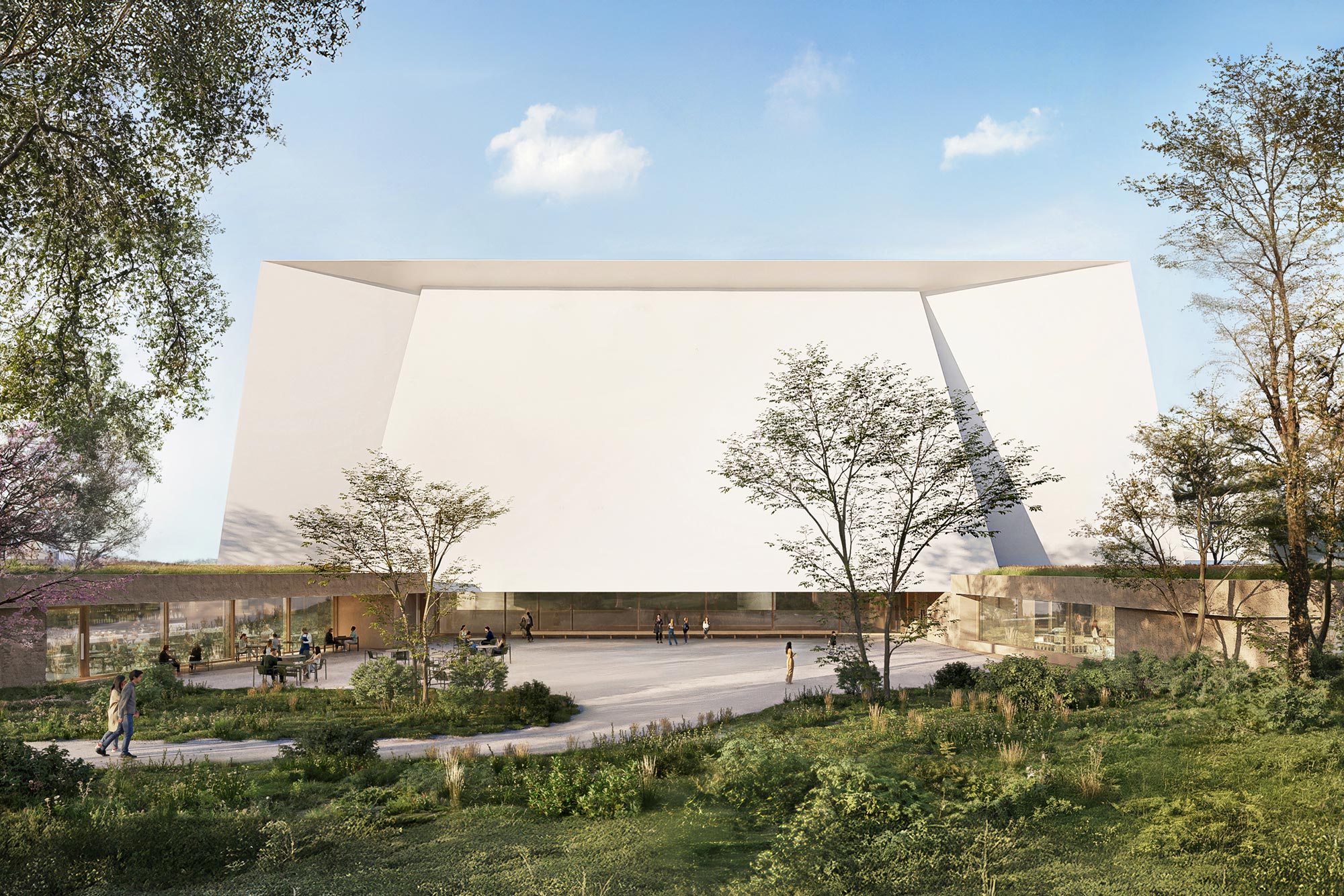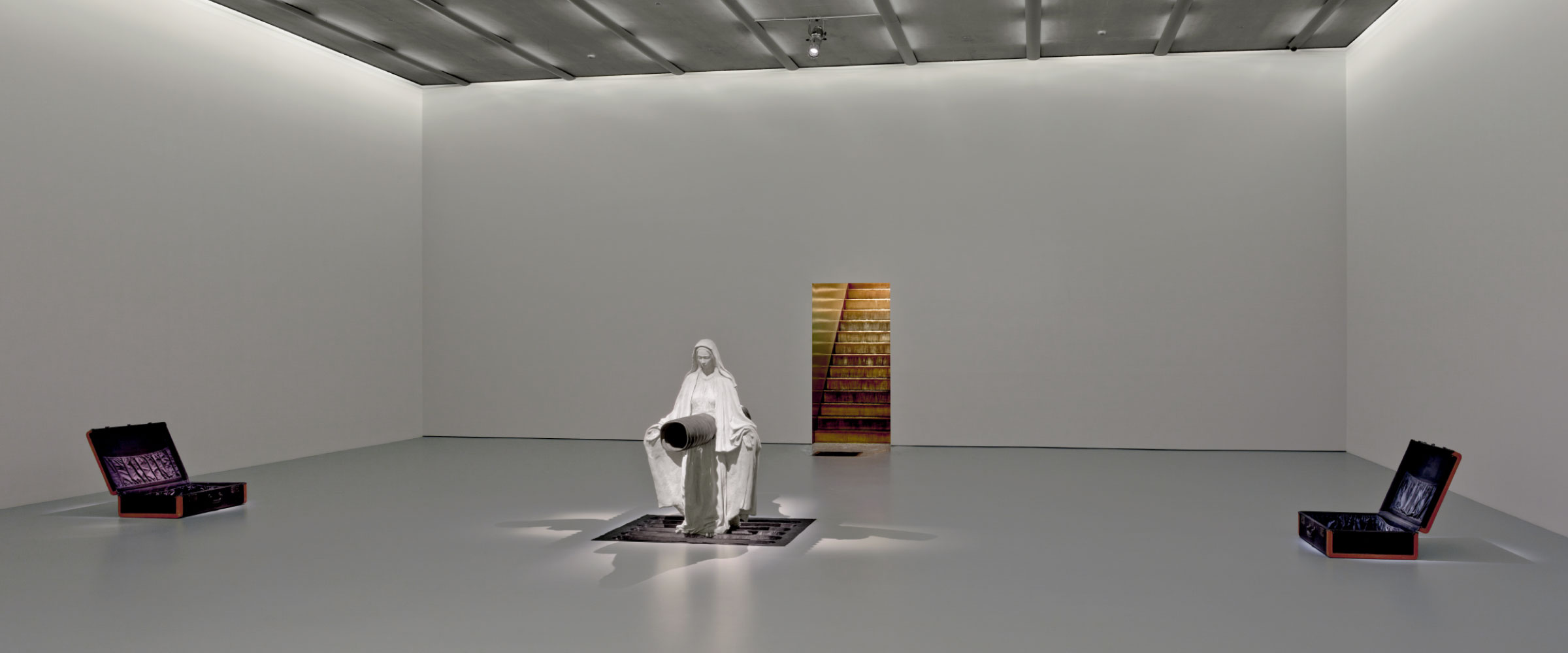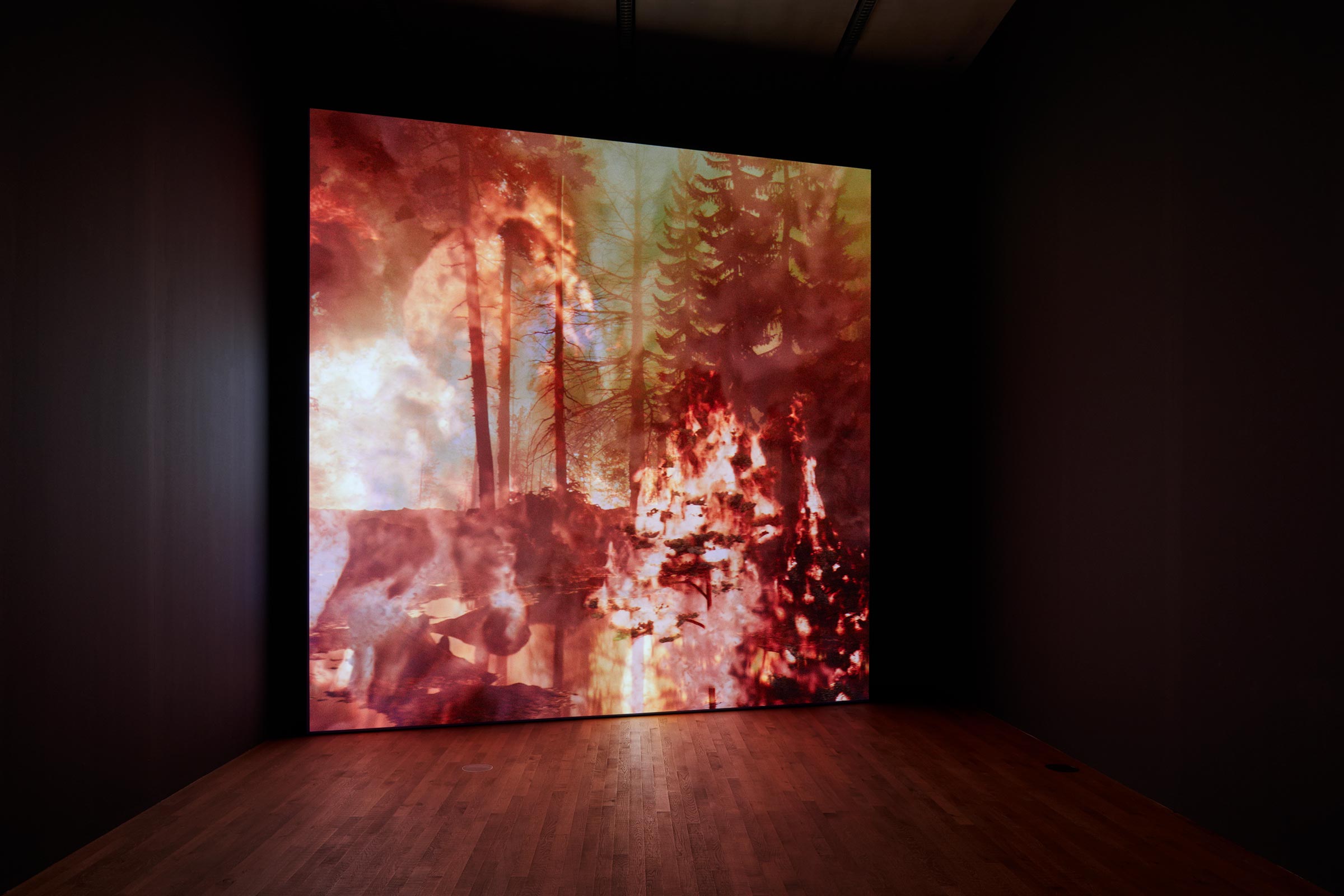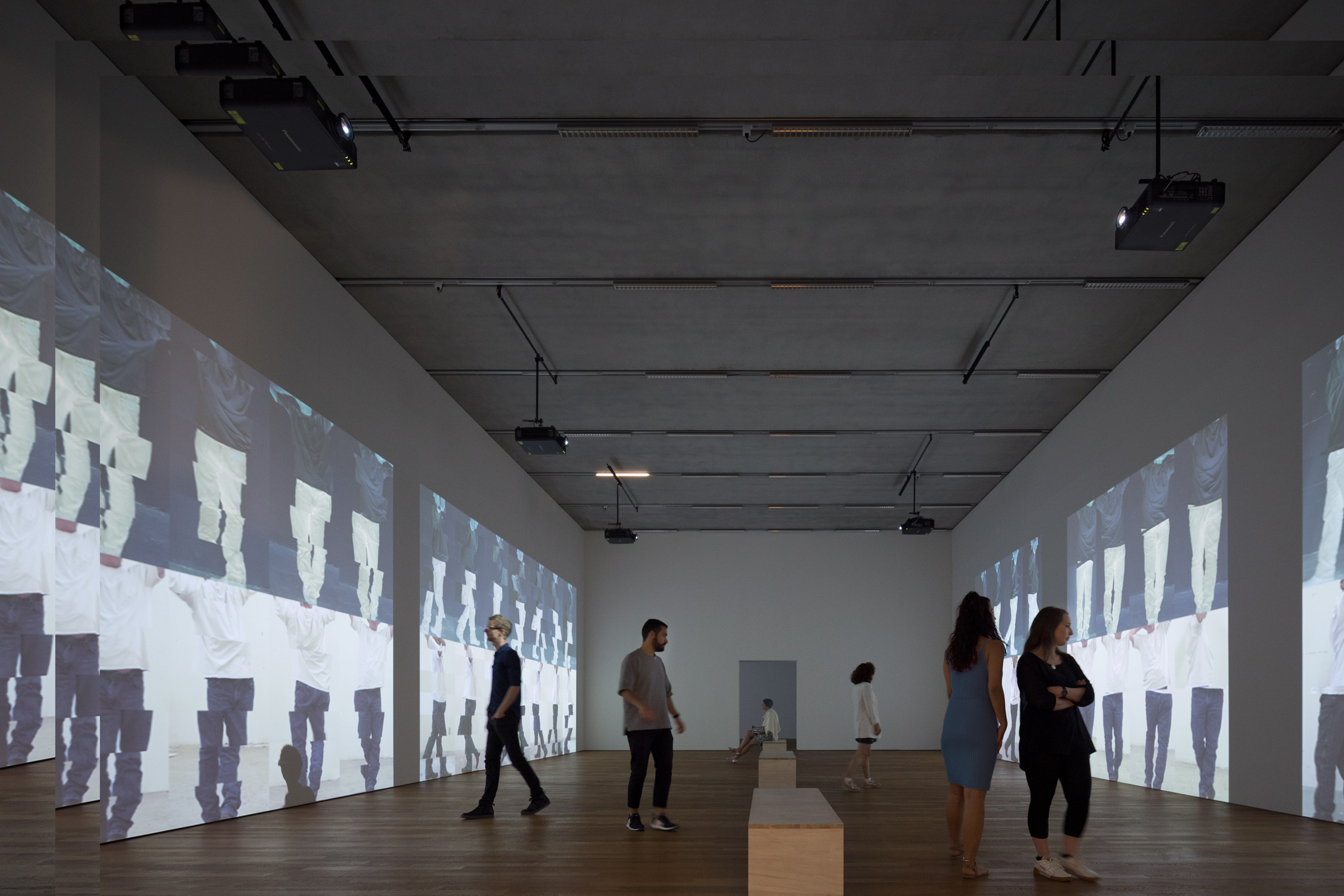Extension building project

Rendering Frontal View, Project Schaulager Extension Building, Laurenz Foundation, Schaulager Basel
Architecture: Herzog & de Meuron, 2024
Since its inauguration in 2003, Schaulager has become an important player in the local and international art world. Based on the unique and unprecedented idea of bridging the gap between museum and storage, the institution is entirely dedicated to preserving original works of art, ensuring their conservation, and making them accessible for teaching and research. School classes, groups of university students, researchers, and other visitors from all over the world daily take advantage of the opportunity to enjoy and study the collection of the Emanuel Hoffmann Foundation.
After twenty years, the Laurenz Foundation, which funds Schaulager, has decided to plan an extension to house specific groups of works from the steadily growing collection. The focus will be on works rarely loaned out or presented at the Basel Kunstmuseum Gegenwart because of their volume and spatial requirements. Two such works by Robert Gober and Katharina Fritsch have already found a permanent home in the existing building. The new building will house works and groups of works of comparable spatial and installative complexity, such as Plötzlich diese Übersicht (Suddenly This Overview (1981–2012), a substantial body of clay sculptures by Peter Fischli and David Weiss, and voluminous sculptures by Matthew Barney.

Katharina Fritsch Rattenkönig, 1993
Polyester, pigment, Emanuel Hoffmann Foundation, on permanent loan to the Öffentliche Kunstsammlung Basel (permanently installed at Schaulager, Basel), Zurich, © 2024, ProLitteris, Zurich, Katharina Fritsch

Robert Gober Untitled, 1995–1997
Installation, various materials, Emanuel Hoffmann Foundation, on permanent loan to the Öffentliche Kunstsammlung Basel (permanently installed at Schaulager, Basel), © Robert Gober

Works from the series Plötzlich diese Übersicht (Suddenly This Overview, 1981–2012) by Peter Fischli / David Weiss, Unfired clay, Emanuel Hoffmann Foundation, on permanent loan to the Öffentliche Kunstsammlung Basel, © Peter Fischli
In addition, the extension will provide space for time-based media works of the kind presented in Schaulager’s exhibition “Out of the Box” (2023), whose spatial requirements and installation are often equally complex. Many media works acquired for the collection in recent years have rarely or never been presented to the public since. Even the existing building has neither the space nor the technology to meet the needs of such works. As a result, recent works of art acquired because their contemporary concerns are deemed relevant for the collection, cannot be made accessible for research and art education. These minclude David Claerbout’s Wildfire (meditation on fire), 2019–2020; Bruce Nauman’s Contrapposto Studies, i through vii, 2015/2016; and Tacita Dean’s Paradise (from “The Dante Project”), 2021.

David Claerbout Wildfire (meditation on fire), 2019–2020
Single channel video projection, 3D animation, stereo audio, color, 24 min., on permanent loan to the Öffentliche Kunstsammlung Basel, © 2024, ProLitteris, Zurich

Bruce Nauman Contrapposto Studies, i through vii, 2015/2016
Seven-channel video installation (color, sound), seven projections, continuous play, jointly owned by Emanuel Hoffmann Foundation, gift of the president 2017, on permanent loan to the Öffentliche Kunstsammlung Basel; and The Museum of Modern Art, New York, acquired in part through the generosity of Agnes Gund, photo: Tom Bisig, Basel © Bruce Nauman / 2024, ProLitteris, Zurich
In the new extension, these works will be installed on a rotating basis and made accessible to the public during limited opening hours. However, as in the existing Schaulager, the focus will be on research and education for art professionals and special groups, as well as experts on art conservation. The current Schaulager will continue to host temporary exhibitions for the general public at irregular intervals, accompanied by scholarly catalogues and art education programs. The highly specialized reference library for on-site research will also remain in this building.
The Laurenz Foundation commissioned the architectural office Herzog & de Meuron, who built the existing premises, to work out a preliminary study. It forms the basis of the present project. The exterior of the planned building will be similar in appearance with façades made of material excavated on site, and the two buildings will be connected internally for logistical purposes.

Rendering Aerial View, Project Schaulager Extension Building, Laurenz Foundation, Schaulager Basel; Architecture: Herzog & de Meuron, 2024
The entrance to the Schaulager extension will face West in accordance with the Foundation’s specification of opening up the building to the developing Campus of the Arts and to the other educational facilities projected for the Dreispitz area. The existing Schaulager is accessed through a small gatehouse in front and welcomes visitors with large LED screens, embedded in the façade and visible from afar. The façade will be reinterpreted in the new building in the form of three monumental, white steel panels that rest at an angle in the façade of the entrance. The two lateral flanks rest on flat pavilions that accommodate the reception area and café respectively. Visitors access them after a short walk through a green zone.
The commission has also specified that the building generate surplus energy despite the exacting requirements of conserving the works of art. To this end, geothermal probes will be installed and a large-scale solar PV system mounted on the roofs and the southern façade. Staff circulation is ensured by a narrow structure between the two buildings, which is also used for deliveries, logistics, and technical services.
An expansive, high atrium inside the new building offers spectacular views comparable to the atrium of the existing building. The floor plans’ flexible design ensures the open storage of the works belonging to the Emanuel Hoffmann Foundation. In addition, new spaces are planned for the staff, such as rooms for conservation, offices, lounge areas, and meeting places. The building also accommodates spaces for art education and seminars as well as a new auditorium. The public reference library and reading room will remain in the present Schaulager.
The Laurenz Foundation is looking forward to the prospect of increasing the public visibility of the Emanuel Hoffmann Foundation’s art collection and actively contributing to the development and diversity of the Dreispitz area.
- Project description Herzog & de Meuron(pdf, 107.33 KB)
